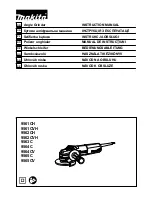
Step 15: Installation of Servos
Parts List
2.6 X 12mm Cap Head Bolts (20)
2.6mm Lock Nuts (20)
Ser vo Fixing Plates (20)
Lower Swashplate Servo
Upper Swashplate Servo
Front Elevator Swashplate Servo
Rudder Servo
Throttle Servo
We recommend the use of high-quality digital servos, however it
is not required. The CCPM/EMS design enables the servos to share
the load, so you can use entry-level servos. Also CCPM geometry
favors linear servo output from head servos. Long servo arms allow
reduced throws in your servos and keep servo output more linear, but
they require more torque. Thus, the digital servos, with their precision
and high torque, are ideal. Servo installation for this section requires
(20) pcs. of each of the following: 2.6mm X 14mm Cap head Bolts,
2.6mm Lock nuts, 2.6mm washers & (10) servo fixing plates. The
first servo to install is the lower rear swash-plate servo. The spline of
the servo must face forward and then you must tape the wire as
displayed. The next step is to install the upper rear swashplate servo.
You must also tape the servo-lead on this servo, but this time on the
bottom. Next, install the front elevator servo and the spline of this
servo should be facing the top of the machine. The throttle servo is
installed next. Install the servo with the spline facing the rear of
the machine. Lastly, install the rudder servo. The spline must
face the rear of the machine. Depending on your assembly
experience, you may want to split the servo for installation. In
this application, the top half of the servo is mounted into the frames
of the helicopter and the servo is then reassembled in the machine.
Note: It may be necessary to add an additional servo fixing plate
between servo flange and the frames to allow for wire clearance.
This adjustment needs only to be addressed on the rudder servo.
Failure to allow proper servo wire clearance can cause servo
malfunction!









































